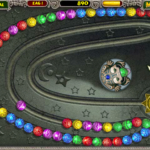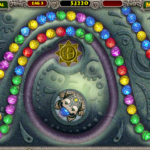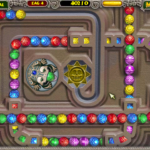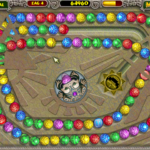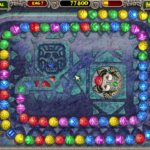Crayon Physics: Minimally Complete
Well, I’ve managed a least-effort pass through every level in Crayon Physics Deluxe. Overall, I find the balance a bit strange: towards the end, most levels were solvable using the same few techniques. For example, I got a lot of mileage out of creating a large weight attached to a stationary structure (that is, one attached to permanent scenery by two pins), then draping a loop of rope, with both ends attached to the weight, over an obstacle and around the ball, then erasing the stationary structure and letting the weight pull the ball upward and to its goal. My first few attempts at doing things similar to this were more complicated and involved more elements, so if nothing else, repetition helped me refine the technique. Still, the number of places where this was applicable makes me wonder if I was expected to come up with easier but less general solutions first.
In my first session, I had used my usual gaming trackball for input, but the second time around, I came to my senses and hooked up the Wacom tablet. It took a bit to get used to the feel of it — I don’t use it very often — but it’s definitely worth the switch (assuming you already have a tablet, of course). Not only does it make it far easier to draw straight diagonal lines, it’s also more mimetic in this context: a stylus, obviously, handles a lot more like a crayon than a mouse or trackball does. I can imagine a world in which tablets of this sort are included with Crayon Physics as a Rock Band-esque custom controller.
Anyway, I’m putting this aside for the moment, because I’m eager to try other new things, but I intend to get back to it before long. There’s still that final spot on the map to be unlocked before I can really feel like I’m done, but that looks like it’ll be a fairly long haul: unlocking it requires Elegant, Old-School, and Awesome solutions for fully half of the game’s levels, and on a lot of the levels that doesn’t even look theoretically possible. My next post on this game will probably describe the physical mechanisms in detail.
 Comments(0)
Comments(0)